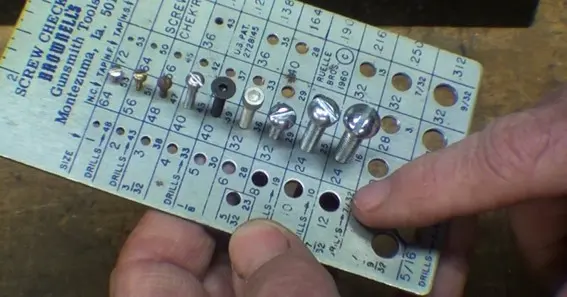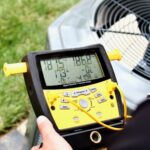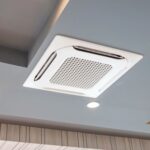When working on any project that involves fasteners, understanding the screw size chart is essential. This chart helps you identify the correct sizes and types of screws to use, ensuring that your work is safe and efficient. Whether you’re a DIY enthusiast or a professional, this guide will provide you with detailed information about screw sizes, including both imperial and metric systems.
What Is A Screw Size Chart?
A screw size chart is a reference tool that displays various screw sizes along with their corresponding measurements, including diameter, length, and thread pitch. It typically includes both imperial sizes (in inches) and metric sizes (in millimeters), allowing for easy conversions and comparisons.
Understanding Screw Size Measurements
Screws are measured by their diameter and length. In the imperial system, screws are labeled with numbers (e.g., #8, #10) that indicate their gauge size, where larger numbers denote larger diameters. For instance, a #8 screw has a diameter of approximately 0.164 inches (4.17 mm).
In the metric system, screws are described by their diameter in millimeters (e.g., M6, M8), and the length is also measured in millimeters. For example, a screw labeled M6 x 1.0 x 50 means it has a 6 mm diameter, a 1.0 mm pitch, and a length of 50 mm.
Screw Size Chart Overview
Here’s a quick reference of common screw sizes, their decimal equivalents, and metric measurements:
| Screw Size | Diameter (Inches) | Diameter (Millimeters) | Threads per Inch |
|---|---|---|---|
| #0 | 0.0600 | 1.524 | N/A |
| #1 | 0.0730 | 1.854 | 64 |
| #2 | 0.0860 | 2.184 | 56 |
| #3 | 0.0990 | 2.515 | 48 |
| #4 | 0.1120 | 2.845 | 40 |
| #8 | 0.1640 | 4.165 | 32 |
| #10 | 0.1900 | 4.826 | 24 |
| #12 | 0.2160 | 5.486 | 24 |
| 1/4″ | 0.2500 | 6.350 | 20 |
This table can help you quickly determine the correct size for various applications.
Types Of Screws And Their Applications
- Wood Screws: Designed for use in wood, these screws have a sharp point and coarse threads. Commonly used for general carpentry.
- Machine Screws: Fully threaded screws suitable for fastening metal components.
- Sheet Metal Screws: These are self-tapping screws that can fasten sheet metal without needing a pre-drilled hole.
- Drywall Screws: Designed specifically for attaching drywall to wood or metal studs.
FAQ
- What is the difference between metric and imperial screw sizes?
Metric sizes are expressed in millimeters, while imperial sizes use inches and gauge numbers. Understanding both systems can help you choose the right fasteners for your projects. - How do I measure a screw size?
Measure the diameter with calipers or a ruler and the length from the bottom of the head to the tip of the screw. - What is a thread pitch?
Thread pitch is the distance between threads on a screw, which affects how tightly it can be secured. It’s typically measured in threads per inch for imperial screws and in millimeters for metric screws. - Can I use metric screws in imperial applications?
While it’s possible, it’s not advisable as the fit may not be secure. Always try to match screw sizes to the corresponding system. - Why is it important to choose the right screw size?
Using the correct size ensures structural integrity and prevents damage to materials. Incorrect sizes can lead to loose fittings or broken components. - How are screw sizes measured?
Screw sizes are measured by diameter, length, and thread count. For example, a screw labeled as “6-32 x 1” has a #6 diameter, 32 threads per inch, and a length of 1 inch.
In conclusion, understanding the screw size chart is vital for anyone working with fasteners. By familiarizing yourself with the measurements and types of screws available, you can ensure your projects are completed successfully and safely. For further details, feel free to explore resources like.
Check out here for a more interesting article what-is-cost-audit










